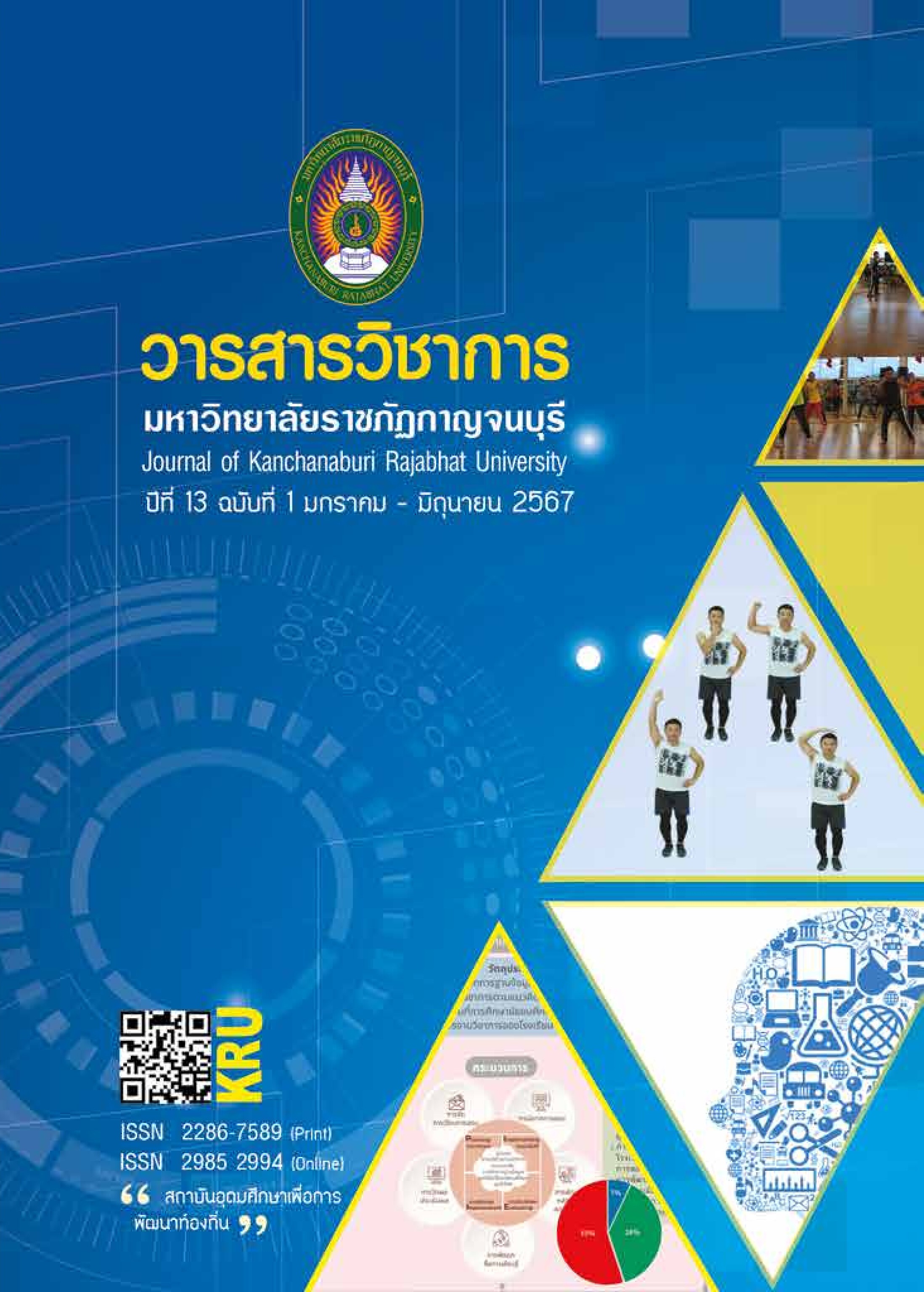เทคนิคการสื่อสารและการให้คิวในแอโรบิกดานซ์
Main Article Content
Abstract
An aerobic dance instructor is a public figure recognized by individuals who enjoy rhythmic exercise accompanied by music. Each instructor possesses distinct communication techniques tailored to their personal characteristics. Effective communication and cueing are crucial elements in creating an enjoyable teaching environment for aerobic dance. The purpose of this study was to analyze the communication and cueing techniques of aerobic dance leaders and the application of these techniques in their instructions. Leaders can choose symbolic techniques for providing cues, such as verbal or visual cueing, with each gesture initiated during the pre-cueing phase (6-7 counts) and concluding on the 8th count. Successful teaching involves the discovery that using symbolic communication, expressed through body language, eliminates the need for leaders to employ excessively loud vocalization. When employing communication methods to signal signs or movements, leaders should opt for positive and rhythmic speech aligned with the musical beat (phase). Less experienced leaders may benefit from understanding and practicing action cueing to develop an appropriate teaching persona. Once proficient, instructors can diversify teaching strategies based on the learners' competence level. Techniques for addressing teaching challenges include modifying the direction of movement, alternating between right and left, and adjusting the tempo to prompt faster rhythm changes in the set of poses
Article Details

This work is licensed under a Creative Commons Attribution-NonCommercial-NoDerivatives 4.0 International License.
References
สุกัญญา พานิชเจริญนาม. (2546). แอโรบิกดานซ์สำหรับครูฝึก. กรุงเทพฯ: เอกสารอัดสำเนา.
Brehm B.A. (2004). Successful Fitness Motivation Strategies. Champaign, IL: Human Kinetics.
Campos, F., Simões, V., and Franco, S. (2015). Characterization and comparison of the participant's perception about the quality of the
fitness group exercise instructor, considering the practiced activity. Arena-Journal of Physical Activities, 4, 85-104.
Castaner, M.O. Camerino, M.T. Anguera, and G.K. Jonsson. (2010). Observing the paraverbal communicative style of expert and novice
PE teachers by means of SOCOP: A sequential analysis. Procedia-Social and Behavioral Sciences, 2 (2), 5162–5167.
Dail, T., and Melton, D. (2009). Developing Aerobic Dance Routines: A Method for Instructing Undergraduate Group Fitness Leaders.
Journal of Physical Education, Recreation & Dance, 80 (7), 23-41.
Grace DeSimone. (2012). ACSM’s Resources for the Group Exercise Instructor. 1st ed. Philadelphia: Lippincott Williams & Wilkins.
Ntoumanis, N., Thøgersen-Ntoumani, C.,Quested, E., and Hancox, J. (2017). The effects of training group exercise class instructors to
adopt a motivationally adaptive communication style. Scandinavian journal of medicine & science in sports, 27 (9), 1026-1034.
Riebe, D.A. (2012). Group Exercise Instruction: More Than Aerobic Dance. ACSM's Health & Fitness Journal, 16 (6), 34-35.
Stanish, H. I., McCubbin, J. A., Draheim, C. C., and van der Mars, H. (2001). Participation of adults with mental retardation in a video-and
leader-directed aerobic dance program. Adapted Physical Activity Quarterly, 18 (2), 142-155.
Weinberg R.S, and Gould D. (2019). Foundations of Sport and Exercise Psychology. 7ed. Illinois: Human Kinetics.


